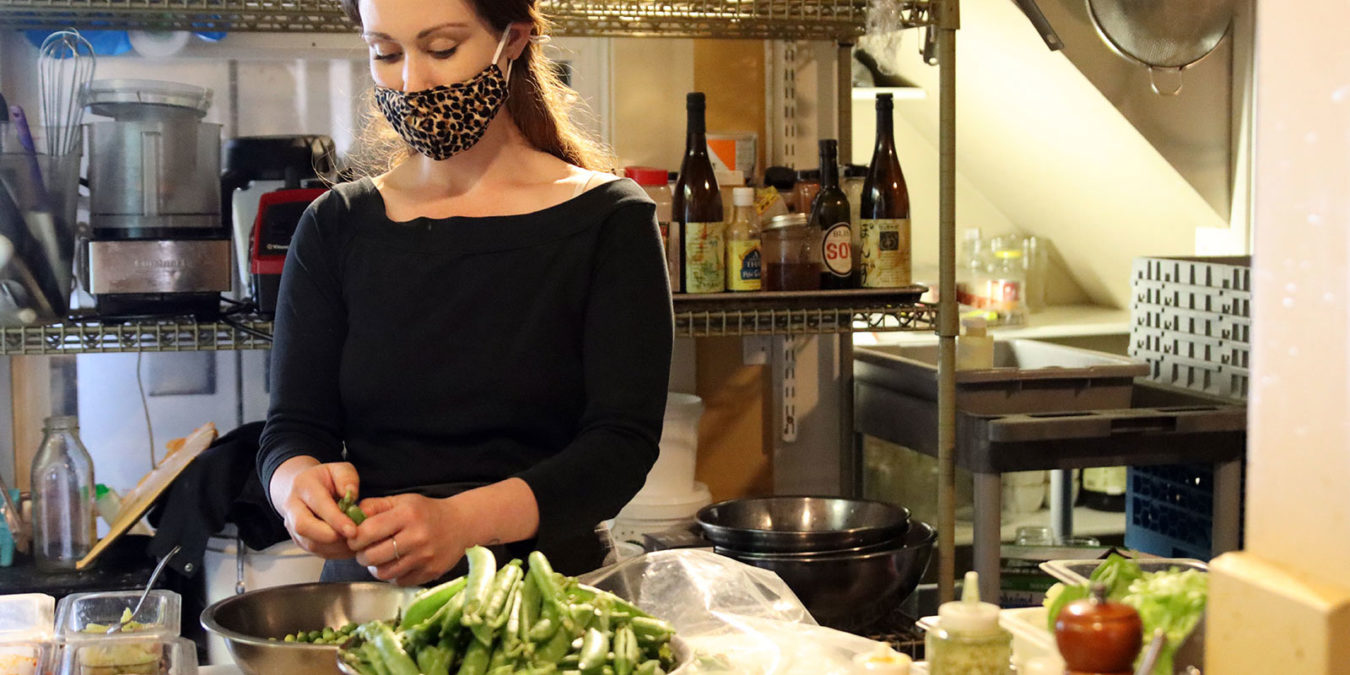
Mulled wine, grog, sparkling wines – these are the beverages we associate with winter and holidays. Here on San Juan Island we can add a new local beverage to our list – hard cider. The Cider Works at Westcott Bay Cider Company has just finished pressing this year’s apple crop, and the results are delicious!
My recent visit to the mill was fun and educational. Co-owners Suzy & Hawk Pingree gave a brief tour of their clean, simple facility, and poured ultra cold samples of their effervescent ciders. Served in a champagne flute, the ciders were lovely golden color, and even had a bit of a glow when I looked down into the glass. Well before getting the glass to my lips, the aroma of fresh apples greeted my nose; the flavor in the mouth was clean, crisp and refreshing, with a pleasant hint of apple fruit and astringency. Not having tasted hard cider before, this sip was a revelation to me – I didn’t know what I’ve been missing! I started thinking of all the foods I’d like to pair this with.
Of course, the real genius at pairing foods with beverages is our chef, Alphonsine. All the restaurant staff is looking forward to what she comes up with for our Cider and Distiller’s Dinner on April 1st – no fooling. That evening we’ll showcase the results of the Pingree’s labors in all their various forms: hard cider – very dry, dry and medium sweet; eau de vie; pommeau; and gin. This whole progression in itself is new to most people. Indeed, even the Pingrees and Westcott Bay Cider Company founder Richard Anderson attended a week-long class with a master cider-maker from England to learn how to perfect their craft.
Education pays off, because their cider has captured numerous awards over the years, though the distilled products are new to the line. The Pingrees plan to distill roughly one-third of their apple crop into gin, using blackberries and salmonberries from
Sweet Earth Farms, thimbleberries from roadside harvests, and madrona bark from their property – no grains. Hard cider is 7% alcohol. When distilled, the purest resulting distillate is Eau de Vie – literally “water of life” but it’s like fire water with aroma and flavor at its 40% alcohol in its finished state. Run this Eau de Vie through the flavoring agents and you get gin; let it rest a week or so and you’re good to go. Take the Eau de Vie and mix it 40/60 with apple juice and the result is Pommeau – sweet, 16% alcohol. Put the Eau de Vie in charred oak barrels to age for a few years and you get Calvados – apple brandy. They’ll be making Calvados as well, but it won’t be ready to taste for a few years.My, so much you can make from a few pressed apples!
The one and one-half acre apple orchard itself dates back to the 1880’s when San Juan Island was a major fruit producing area for the Puget Sound region. It was replanted in the mid 1990’s with 15 traditional English cider varieties with obscure names like Kingston, Black Bittersharp; Brown Snouts; Yarlington Mill; Dabinett and Sweet Coppin. They’re very tannic, mealy, apples – not good for eating or baking – but perfect for blending in cider. There-in lays the true art of cider-making – the ability to blend for fruitiness, tartness (acidity), and astringency (tannins).
Cider goes well with fruit and cheese, seafood, and light meals, and can be used in place of white wine in cooking. Coho now carries all three types, so now you’ll have an opportunity to try them out next time you join us.

